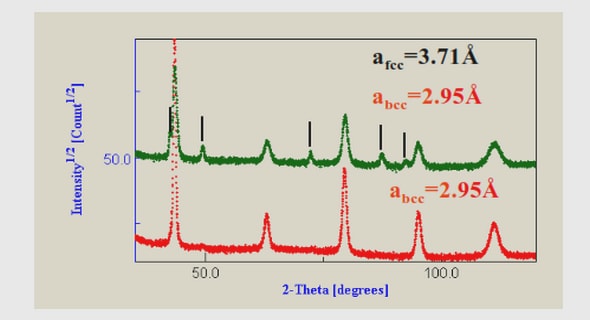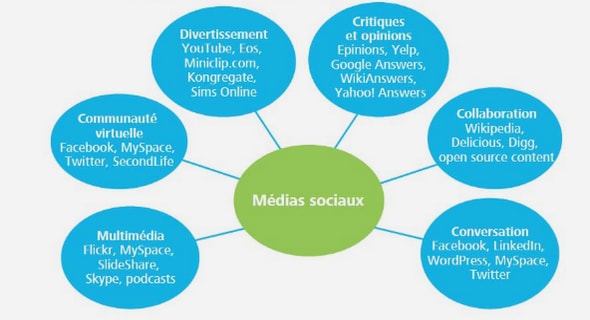Get Complete Project Material File(s) Now! »
CHAPTER 2 A CULTURE OF LEARNING, TEACHING AND SERVICES 2.1 Introduction
The purpose of this chapter is to explore how the dramatic changes in South African society have affected the culture of learning, teaching and services (COLTS) in schools, with particular reference to the effect that the transition from apartheid rule to democracy had. At the heart of transition are approaches to the creation of quality schools in all communities. Quality COLTS could enhance the quality of work life for school educators as internal role players because it assumes safe work environments, fair supervision, participation in decision-making processes, opportunities for advancement, growth and co-operative governance (Steenkamp, 1998:23). Related to these are humanism regarding ethical standards in the work place, improvement of working conditions, worker protection, scientific organisation of labour and democratisation of work (Van der Westhuizen, 2002:268), all of which are character traits of positive COLTS.
Transition, which means a movement or a shift from a current (troubled) state to a new state (quality schools), needs to be managed. In education, transition involves not just managing the current or transitional organisation of schools, but also organisation in new schools. For this purpose the Gauteng Committee for COLTS was established during the transition phase to assist the Department of Education (DoE, 1999d:12) in and to develop an understanding of this transition. More specifically, the purpose was to identify intervention strategies that could contribute to a climate conducive to change and the improvement of schools (Chisholm & Vally, 1996:1). Indicators of such climate would include permanently appointed principals; established school governing bodies and school management teams; internal role player (educator) satisfaction; frequent interaction of role players; a specific school culture, belief system or ethos that reflect the values of the entire school community (Van Schoor, 2001:21; Kruger & Van Deventer, 2003:14).
What is a culture of learning, teaching and services
Chisholm and Vally (1996:13), Smith and Schalekamp (1997:4), Christie (1998:13; Metcalf (1997:7), DoE (2000e:15) and others in South Africa refer to the Culture of learning, teaching and services as positive COLTS. Bruce and Geoffrey (1997:14), Pool (2000:37), Oakland (2000:22), Fullan (2001:71), Kato (2001:1), Marlow (2002:1) and others, use the terms ‘culture change’ and ‘improvement of schools and quality culture’ when referring to positive COLTS. It seems, therefore, that COLTS is a South African concept used to refer to what is known as culture in foreign contexts such as in the United States, United Kingdom and Australia. Both concepts refer to the norms, values, behaviour, climate and attitudes of educators and learners towards learning and teaching. Since this is a South African study, the term culture will be used when referring to foreign contexts while COLTS will be used for South African contexts. On the whole the implications of these concepts mean school improvement.
The establishment of COLTS as a Department of Education structured intervention strategy was the result of a lengthy struggle for justice in education that started during the 1976 Soweto uprisings. The uprisings marked the beginning of a long and bloody conflict that spanned generations, took the lives of thousands and enslaved millions (Vos Brits, 1990:56). The uprising negatively affected black schools spawned by apartheid, with unprepared educators, educator despondency, late-coming, absenteeism (resulting in the loss of teaching and learning), abuse and violence becoming the norm rather than the exception. This was the beginning of a negative COLTS in the black schools (Kruger & Van Deventer 2003:4).
Campaigns such as the multi-media project Yizo – Yizo (a 13 television drama series), the Gauteng COLTS, and the South African Education Charter were launched to create an awareness of dysfunctional (primarily black) schools and the need to improve them (DoE, 1999b: 2). In July 1999 the former Minister of Education, Professor Kader Asmal, launched his Call to Action campaign, which was designed to mobilise South Africans to build an education and training system appropriate to the 21st century. The Call to Action, operationalised under a plan known as Tirisano – a Setswana word meaning, “working together” (DoE, 2001c:18), could be regarded as the second stage of the COLTS campaign – a five-year project (1996 – 2000) for the creation of awareness regarding dysfunctional schools, and officially terminated in 2002 (DoE, 2002:14). Tirisano focuses on accountability, efficiency and performance excellence in schools and requires the establishment of mechanisms that will ensure continuous improvement, the measuring of performance excellence, the evaluation and monitoring of reform. The next section argues that Tirisano programme 2 was a strategy for the implementation of quality COLTS (2000 – 2004).
In spite of the good intentions and concerted attempts to reconstruct dysfunctional schools, the cultures in schools did not improve as expected. There are still symptoms of negative COLTS in black schools (cf. 2.3), suggesting the need for a different approach/strategy. In this regard TQM philosophy is proposed in this study (cf. 3.5) to enhance Tirisano strategy (programme 2). Its notable successes in enhancing quality in industry and schools in the US, UK and Australia will be discussed in Chapter 3 (cf. 3.3). It suffices to say here that its holistic systems approach, customer-driven focus and empowerment of role players are seen as crucial to the continuous improvement and transformation of schools in South Africa (Van der Westhuizen, 2002:287).
Kruger and Van Deventer (2003:3) refer to positive COLTS as the attitudes of role players towards teaching and learning, and the presence of quality management of teaching and learning processes in schools. Advocates of COLTS argue that, in the improvement of COLTS, joint and collaborative efforts are required from all role players. Indicators of positive COLTS are willingness, commitment, positive attitudes and dedication of role players in the improvement of teaching, learning and provision of services to schools. This implies that all role players value the process of teaching and learning; existing practices reflect a commitment to teaching and learning; the resources needed to facilitate this process are available and schools are structured to facilitate these processes.
The role players in a culture of learning, teaching and services
According to Kruger and Van Deventer (2003:4), schools with positive COLTS display the characteristics such as a positive classroom environment in the sense that educators are committed to teaching, learners participate in learning and teaching activities, order and discipline prevail and interpersonal relationships are sound. The leadership and management are effective and School Governing Bodies (SGBs) and School Management Teams (SMTs) work towards the realisation of a vision, aligning and directing role players’ settings, strategies and empowerment accordingly. Subsequently, the necessary infrastructure and facilities are in place and are neat and safe for teaching and learning. Lastly, educators maintain high professional standards, including role modelling and there is evidence regarding healthy relationships that exist between all role players and all of them exhibit a sense of purpose.
In short, it can be concluded that:
- Principal is to instill a culture of working together in the spirit of oneness and inspire, promote and support innovation among role players.
- Educator is to work in tandem with parents in teaching learners how to live, lead productive lives and care for others with a view to share in diverse cultures, common values, norms and climate as good citizens.
- Learner is to build a strong community as foundation for improving the learning climate of schools because schools need to form bonds of their communities.
These role players’ roles are summarised below:
Oakland (2000:24) mentions that the primary task of a principal, just like that of a leader is to create and build quality culture in schools. Similarly, Bond (2001:22) argues that it is the responsibility of a leader to inspire, support and promote a culture of performance excellence. Performance excellence in school contexts would mean educators and learners doing their best in managing teaching and learning respectively; demonstrating commitment to a culture of performance; providing support and appropriating resources and assistance; establishing partnerships with internal and external role players and appreciating and recognising achievements. The principal as the leader of a school fulfils a number of roles in creating positive and quality COLTS. These roles are summarised and documented as follows by authors such as Gilchrist (1996:135), Gates (1998:19), Freiberg (2000:13), Kruse (2001:350/360), Hausman (2000:25), Blasé and Blasé (1999:130), Caldwel (1999:456) and DoE (2001d:1):
- The principal provides a vision of where he/she wants the school to be. For example, this vision may be about academic performance, in terms of the pass on a yearly basis. This vision may be captured in the mission statement as milestones for achieving these results.
- The principal develops strategies that will guide the school towards achieving the vision. These strategies are broad directives to be followed by all role players designing operational plans.
- The principal takes care of critical success factors without which the plans cannot be executed. For example, it will not be possible for a school to teach effectively if stationery, textbooks and other teaching learning resources are not available to educators and learners.
- A related factor is the provisioning of appropriate infrastructure. The principal alerts the Department of Education to an inadequate infrastructure by submitting a requisition, following the appropriate procedure through school governing bodies.
- Fullan (2001:112) and Marlow (2002:1/2) argue that the leadership skills of the principal as context setter and designer of culture change are all about instilling a culture of oneness, transparency, trust and innovation among role players. It is important for principals to tap into the energy and excitement of staff, to resuscitate their passion for teaching, even after years of restructuring that might have left many suffering from change fatigue. Only then will educators be willing to take risks and to express their ideas freely.
Educators need to know their learners and focus on relationship building. Consequently, they establish a relationship of trust in which learners are respected, understood and recognised for what they are. Such a message of inclusion lays the foundation for open communication channels provided there is enthusiastic and professional management of learning processes and learning environments that are the core of the motto of being well prepared. Attention is paid to advance preparation in order to anticipate learners’ expectations. The creation of an environment conducive to learning and teaching strategies such as learning materials and methodology provides the opportunity for learners to practice their skills as well as to build co-operative learning environments in which they understand the dynamics of working together and are able to give and take in a group situation.
The primary task of an educator is to teach but, that for teaching tasks to be didactically and pedagogically effective, teaching has to be properly managed. In other words:
- Planning and preparation of lessons must take place timeously.
- The classroom environment must be conducive to teaching and learning.
- Learner activities must be organised for learner involvement and participation.
- Various teaching methods must be used to make learning interesting.
- Classroom conflict must be managed towards a win-win situation.
CHAPTER ONE: ORIENTATION
1.1 Introduction
1.2 Problem statement
1.3 Objectives
1.4 Empirical design and methodology
1.5 Clarification of concepts
1.6 Summary
CHAPTER TWO: THE CULTURE OF LEARNING, TEACHING AND SERVICES
2.1 Introduction
2.2 What is a culture of learning, teaching and services
2.3 The negative culture of learning, teaching and services
2.4 Addressing dysfunctional schools in the transition period
2.5 Impact of the interventions and codes of ethics
2.6 Summary
CHAPTER THREE: TOTAL QUALITY MANAGEMENT FOR SCHOOLS
3.1 Introduction
3.2 Total Quality Management for schools
3.3 TQM for schools
3.4 The need for school change to be managed
3.5 The implementation to Total Quality management in schools
3.6 Summary
CHAPTER FOUR: RESEARCH DESIGN, METHODOLOGY AND RESULTS
4.1 Introduction to empirical study
4.2 Research design and methodology
4.3 Research findings
4.4 The prevailing culture of learning, teaching and services at schools
4.5 Summary
CHAPTER 5: SUMMARY, CONCLUSIONS AND RECOMMENDATIONS
5.1 Introduction
5.2 Summary of preceding chapters
5.3 A TQM Intervention Framework for SA schools
5.4. How to use the framework
5.5 Conclusion
5.6 Limitations of the study
5.7 Recommendations
5.8 Recommendations for further study
5.9 Summary
GET THE COMPLETE PROJECT


